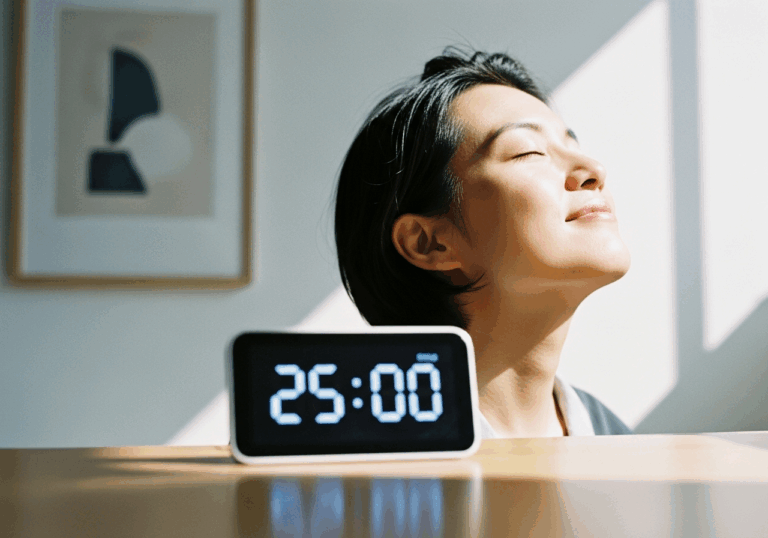Science-Backed Tips
Boost Your Health with 1-Minute Movement Breaks
Reduce systolic blood pressure by a few mmHg with simple stretches.
📊 Did you know?
💡 Why It Matters
1️⃣
Reducing systolic blood pressure by just a few mmHg can lower the risk of cardiovascular diseases.
2️⃣
Increased vigor from movement breaks can enhance productivity and overall job satisfaction.
3️⃣
Implementing microbreaks can lead to improved mental health and reduced feelings of fatigue.
✅ Try These Micro-Tips
🎯
Take a 1-minute movement break every 30 minutes during work hours.
🎯
Incorporate simple stretches or standing exercises during these breaks.
🎯
Set reminders on your phone or computer to ensure you take these breaks.
🎯
Encourage colleagues to join you for group movement breaks to enhance social interaction.
📚 The study
By simply standing or stretching for a minute, individuals can experience physiological relief that not only supports mood but also boosts energy levels.
This is significant because even a modest reduction in blood pressure can lower the risk of cardiovascular diseases, making these microbreaks a vital component of a healthy lifestyle.
Moreover, the increased vigor from these movement breaks can enhance productivity and overall job satisfaction, creating a more positive work environment.
Implementing microbreaks into your daily routine can lead to improved mental health and reduced feelings of fatigue, making it easier to tackle daily challenges with renewed energy.
So, whether you’re working from home or in an office, remember that taking a minute to move can have profound effects on your health and well-being. Embrace the power of microbreaks and transform your workday into a more energetic and fulfilling experience!
❓ Frequently Asked Questions ❓
Learn more
What are movement breaks?
Movement breaks are short intervals of physical activity, typically lasting around one minute, taken every 30 minutes during work hours. They can include standing, stretching, or simple exercises to promote physical and mental well-being.
How do movement breaks affect blood pressure?
Performing 1-minute movement breaks every 30 minutes can lead to modest reductions in systolic blood pressure, typically by a few mmHg. This reduction can lower the risk of cardiovascular diseases over time.
What is the impact of movement breaks on fatigue?
Regular movement breaks can significantly reduce feelings of fatigue during work hours. This increase in energy can enhance overall productivity and job satisfaction.
How often should I take movement breaks?
It is recommended to take a 1-minute movement break every 30 minutes while working. This frequency helps maintain physical activity levels and supports mental well-being.
What types of activities can I do during a movement break?
During a movement break, you can perform simple stretches, standing exercises, or even short walks. The key is to engage in any physical activity that gets you moving and away from your desk.
How can I remember to take movement breaks?
Setting reminders on your phone or computer can help you remember to take regular movement breaks. You can also use timers or apps designed to prompt you for breaks throughout your workday.
Can movement breaks improve mental health?
Yes, incorporating movement breaks into your routine can lead to improved mental health by reducing stress and enhancing mood. The physiological relief from movement supports overall emotional well-being.
Should I encourage my colleagues to join me for movement breaks?
Encouraging colleagues to join you for group movement breaks can enhance social interaction and make the activity more enjoyable. It also fosters a supportive work environment focused on well-being.
What are the long-term benefits of taking movement breaks?
Long-term benefits of taking movement breaks include reduced risk of cardiovascular diseases, improved mental health, and increased job satisfaction. Regular breaks can lead to sustained energy levels and better overall health.
Is there scientific evidence supporting the benefits of movement breaks?
Yes, multiple small studies have synthesized the benefits of microbreaks, showing net decreases in blood pressure and increases in vigor. These findings highlight the significance of short physical activity intervals for health and productivity.





